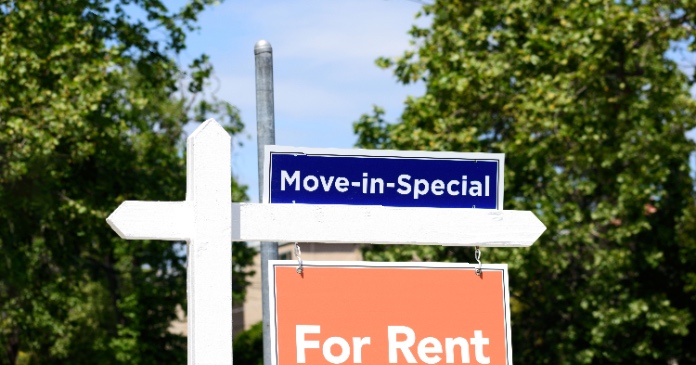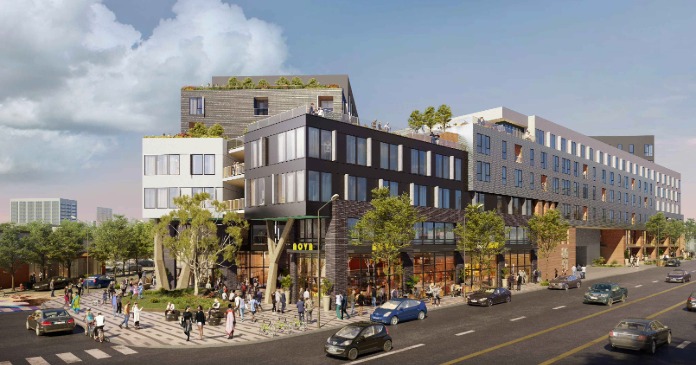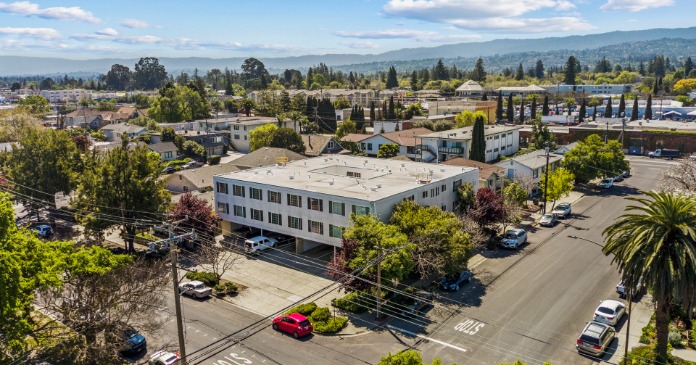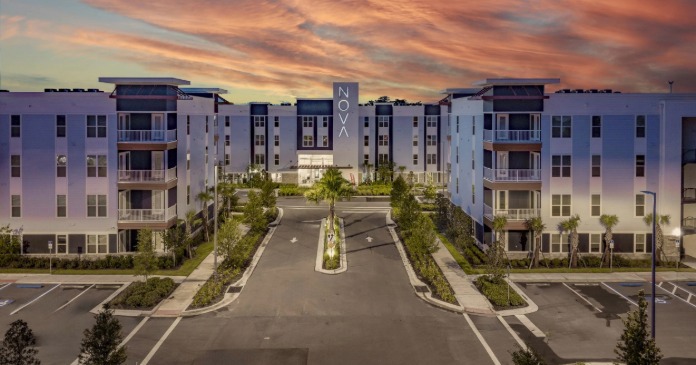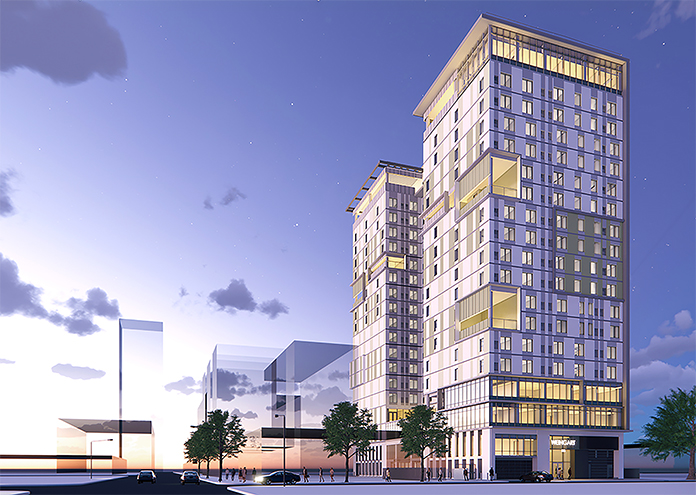
Gym, balconies, restaurant, soundproof music studio, business center, located in downtown Los Angeles, and it’s pet friendly.
Sounds like a pretty good hotel, four-stars at least.
Sounds like it, but it isn’t. It’s the new Weingart Center 19-story “Permanent Supportive Housing” for the homeless tower that is now taking lease applications.
There will be 278 units—about 80 percent studio apartments and—unlike a hotel—it will also offer its soon-to-be-residents (largely, one assumes, culled from the surrounding Skid Row neighborhood) a menu of “life skills” services very few hotels offer:
- Benefits counseling and advocacy
- Substance use referrals
- Employment assistance
- Education assistance
- Financial and budgeting assistance
- Pet and service animal services
- Health and wellness classes/event
What did you expect for $594,000 a unit?
The project cost about $165 million dollars and the studio apartments are essentially the equivalent of what one would find at a decent “extended stay” hotel—large room kitchenette, bed, tables, chairs, bathroom, TV, etc. At $594,000 a unit, that works out be a bit over $1,000 per-sq.-ft. to build.
Extended stay hotels do not cost that much—not even close, especially when the land is somewhere between cheap and free.
For example, right now a five-star resort costs about $604,000 per room. A three star hotel, which may be a better comparison as the Weingart Center doesn’t have a golf course—yet—costs about $220,000 per unit to build.
Wondering about “comps” in L.A. for $600K? There’s one downtown—a bit bigger—and one in Marina Del Rey, more than twice the size of the typical Weingart studio unit and it has a view.
As with the $1 million dollar per-unit-recently-approved-Santa-Monica project, the cost of the “housing first” philosophy of the L.A. homeless advocates and agencies is simply eye-popping.
Splitting the difference and coming in closer to what former City Controller Ron Galperin found in his audit more than a year ago, a typical new unit will come in at about $700,000 per.
That means that housing the entire L.A.-area homeless population of about 75,000 will cost about $52 billion dollars.
$52,000,000,000. The state could build a third of the high speed rail project for that.
So why is it these projects cost so much? A hint could be found in the 2020 filing with the state that Weingart made for a 144-unit project called Tower 2. The concept is the same, though neither of the other two buildings scheduled for the same area are listing themselves as having 144 units, though this project actually has two “towers” so it could refer to one of them.
For that proposal, the cost was going to be about $90 million (or $625,000 per unit, so the comparison is most likely apt) with a hard cost (construction, etc.)/soft cost (architecture, fees, etc.) ratio of two to one.
In other words, about $60 million was for construction and $30 million for the rest, including a developer’s fee of more than 10 percent (that’s really high, by the way.)
In a typical private hotel complex, hard costs are generally 75 percent and soft 25 percent. That’s a three-to-one ratio—far higher than seen in the public sector.
There is also the issue of how “permanent” the housing will be and whether behavioral standards will be enforced; is it a “wet house?”(i.e. a place that allows substance use.)
The Weingart Center did not respond to an email about these questions. However, considering federal policy and the standards set for the Santa Monica project, it is most likely the building will be wet and have no time limit for residency.
As to rent that, too, is not exactly clear, though typically at least some form is paid based on a sliding scale percentage of the amount a person earns, or takes in, or reports.
If the rent is minimal, the entire benefits package a resident would most likely receive —Medi-Cal, foodstamps, housing, direct assistance, etc.—would have a total value of about $60,000 per year.
Excerpt Thomas Buckley is former mayor of Lake Elsinore, Calif., a Senior Fellow at the Calif. Policy Center, and former newspaper reporter.


